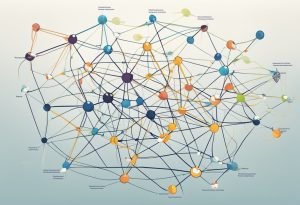There are two more things one might come across NLP or natural language processing and NLU or natural language understanding(nlp vs nlu). These related terms refer to different things. As was mentioned, NLP is the field of artificial intelligence that teaches computer systems human language. NLU is a subfield of NLP (nlp vs nlu) that is focused on language comprehension.
While NLP concerns processing unstructured language data into structured data formats, NLU concerns the interpretation and understanding of the meaning and context of natural language input. In simple terms, one concerns the mechanics of language, while the other concerns semantics. These two fields are closely related to each other they tend to be used together in real-life applications such as chatbots and virtual assistants. Therefore, it is crucial for anyone planning on getting into the AI field or creating conversational interfaces learns the differences between NLU and NLP. In the next sections, we will shed more light on the NLU and NLP differences and list some of the technology’s use cases.
Fundamentals of NLP and NLU
Natural Language Processing and Natural Language Understanding are two fields of study that fall within the context of Artificial Intelligence NLP is the interaction of the computer without the human language, whereas NLU is the interpretation of the human language by computer . NLP deals with the analysis of large quantities of text data. This form of text may be either written or spoken language. Sub-components of NLP include text classification, sentiment analysis, named entity recognition, etc .
NLP algorithms are used to automate functions like chatbots, virtual assistants, language translation, along more. NLU, on the other hand, is the computer’s ability to understand human language. It includes sentence understanding, which is the ability for the computer to grasp what a word says, not just lift out. NLU algorithms use models to custom to decode the human language.
In conclusion, NLP and NLU are closely related, and they refer to the processing and understanding of natural language data in various AI applications. However, in practice, they are two quite different topics: NLP deals with language data while NLU tries to understand them. Both of the subjects play an important role in the development of advanced AI applications that can interact with humans more naturally and intuitively.
Key Differences Between NLP and NLU
Natural Language Processing (NLP) and Regular Language Getting it (NLU) are two firmly related fields of Man-made reasoning that arrangement with the handling and understanding of human language. While they share a few likenesses, they are essentially divergent in their extent of innovation, handling intricacy, and ultimate objectives.
Scope of Technology
NLP is an extensive field that involves a variety of techniques for analyzing and processing human language. It includes a variety of tasks varying from straightforward text processing like tokenization and stemming to more advanced one, such as sentiment analysis, topic modeling, and machine translation. NLP also focuses to the surface structure of language, such as grammar, syntax, and semantics.
NLU, on the other hand, is a more concerned field that deals especially with the understanding of human language. It involves advanced techniques like named entity recognition, relationship extraction, and semantic role labeling and also covers the other levels of language like pragmatics, context, and discourse. It analyzes the meaning behind the words or phrases or sentences people are in use.
Processing Complexity
NLU is generally considered to be more challenging than NLU. This is because most NLP tasks focus on the surface structure of a language. For example, statistical models and rule-based approaches can help with the analysis. The algorithms can also be trained on the huge varied data, which allows achieving high accuracy. For example, such tasks as part-of-speech tagging and named entity recognition can be handled correctly. In contrast, NLU is about the deeper understanding of a language.
The algorithms should understand the meaning behind words or phrases. Moreover, context, pragmatics, and discourse should also be considered. It requires modern technics like machine learning, deep learning, and neural networks. Such NLP problems are difficult to train, and only using enormous amounts of data makes it possible to achieve high levels of accuracy.
End Goals
Finally, NLP and NLU differ in their end goals. NLP contributes to the automation of tasks related to human language such as text processing, information retrieval, and machine translation. Many areas implement NLP; some of them include chatbots, virtual assistants, performance analysis tools, among others. Meanwhile, NLU assists in the creation of machines that understand human language. The end is thus to enable machines to interpret the words and phrases meaning and make appropriate responses.
Voice assistants, customer service bots, intelligent personal assistants, among others, exemplify some of the areas that apply NLU. In summary, although NLP and NLU are related, they differ in the type of technology, the processing is more complicated, and the end goals. NLP focuses on language surface structure, NLU focuses on the deeper structure of language, NLP is less complex than NLU, and NLP automates tasks related to human language, while NLU focuses on machines understanding human language.
Applications of NLP and NLU
Normal Language Processing (NLP) and Regular Language Getting it (NLU) are two interrelated fields of Man-made consciousness (computer based intelligence) that have been building up momentum lately. In spite of the fact that NLP and NLU are frequently utilized conversely, they have various applications.
NLP in Everyday Technologies
Everyday technologies that use NLP(nlp vs nlu) include search engines, with the NLP algorithm being applied in understanding the user query to generate relevant results. Voice assistants are other common technologies that use NLP. The most popular voice assistants include Amazon’s Alexa and Google Assistant . Common applications of voice assistants include understanding voice commands of users and responding to them. Finally, NLP algorithm is used by chatbots to ensure that they understand user queries in natural language before giving a response. Similarly, NLP is used in sentiment analysis of the sentiments expressed in various posts on social media, reviews, blogs, and also comments.
NLU in Customer Service
In other words, when applied in customer service industries, NLU may be helpful to boost “customer experience, reduce response time, and increase response accuracy” . NLU algorithms can understand and interpret customer queries and route them to the appropriate department or agent. Moreover, chatbots that use NLU to provide conversational interfaces can understand and respond to customer queries. Eventually, customer service departments “can reduce response time and increase response accuracy” which enables them to improve customer experience. Thus, NLP and NLU are broadly used in many industries. NLP is used in everyday technologies including search engines, voice assistants and chatbots. NLU is used in customer service industries to reduce the workload of employees and improve customer experience.
Challenges and Future Directions
Overcoming Ambiguity
Ambiguity: Another major challenge with NLP is the necessity to tackle ambiguity. Assuming that a word or even a phrase simultaneously possesses numerous meanings, it is very time and effort-consuming for machines to determine the one that corresponds with a particular context. This challenge is especially important in the course of machine translation since a single word may have several translations depending on the context .
Semantic analysis may be an optimal solution in this regard, considering that it analyzes the role of words and phrases within the sentence. This method presupposes the use of big training data and much processing power, yet it has demonstrated outstanding results during the last several years. Additionally, machine learning algorithms that may be taught to understand context and obtain feedback may address ambiguity to simplify NLP.
Advancements in Machine Learning
Machine learning has been a critical enabler of the progress made in NLP and natural language understanding . In particular, deep learning algorithms employing neural networks have facilitated the creation of models capable of “understanding” language patterns through exposure to extensive data samples, enhancing the performance of NLP tasks, including sentiment analysis and entity recognition .
One of the most promising developments within machine learning has been the creation of language models, typified by GPT-3 . Language models can generate highly realistic human-like text and have many applied uses, from chatbots to live translation services . However, these models require a costly amount of training data and computational power, making them unattainable for smaller players.
One other critical area of machine learning for NLP and NLU that has witnessed rapid development is the formulation of unsupervised learning methodologies that are rapidly learning from unstructured data without labels . This area has thus far demonstrated to be extremely successful in such duties as movie clustering or text classification.
Generally, the difficulty for the NLP and NLU future directions includes several aspects that are sometimes diverse and complex. By using AI, machine learning, and deep research trends and advancement, scientists and practitioners produce value in this regard, overpowering these complexities and enhancing the efficiency of NLP methods.



